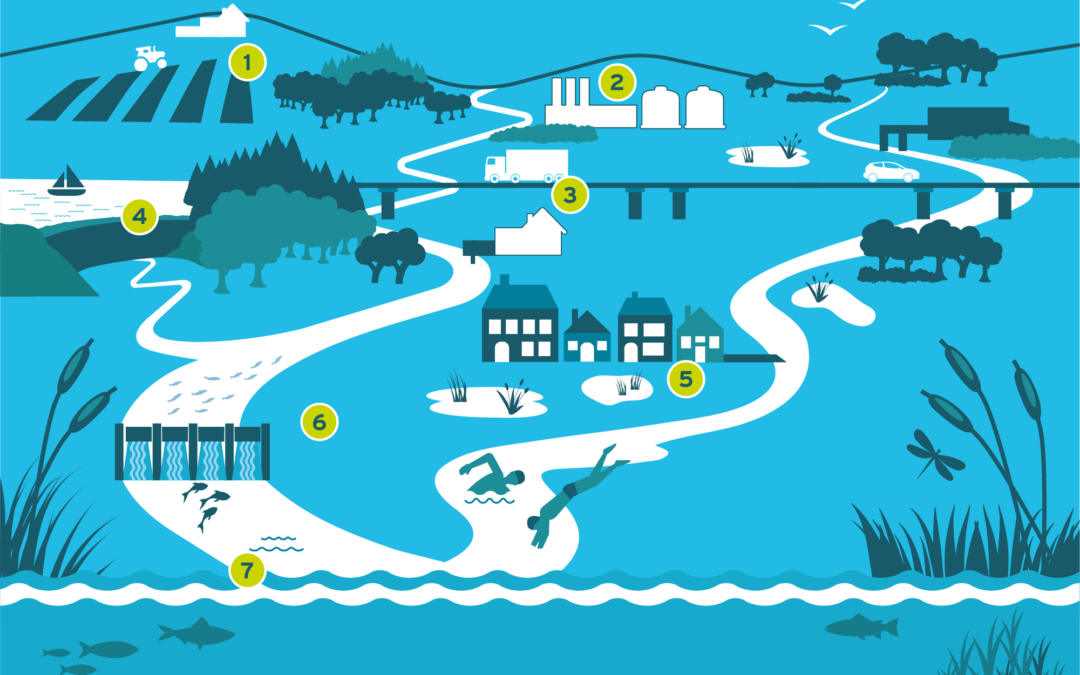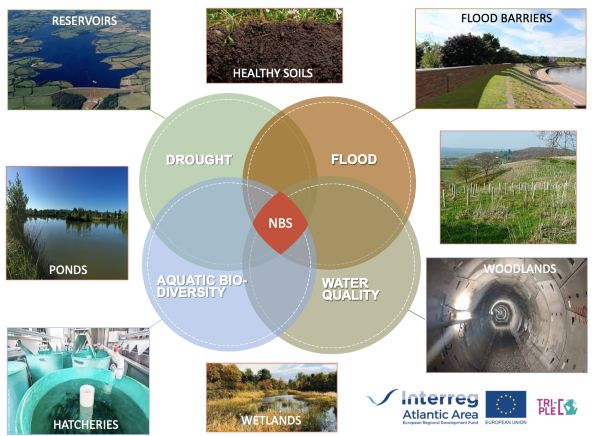Our CEO Dr Laurence Couldrick shares his thoughts on the Plan for Water.
Back in the 2010 Conservative manifesto, David Cameron championed Big Society, where the wider community would take a much higher level of personal, professional, civic and corporate responsibility in delivering societies needs and wants.
However, within a few years this term was ditched as it was felt by the public that it was code for the government shirking responsibilities and piling it on the shoulders of rest of us.
Scroll forwards thirteen years and the Plan for Water starts to raise this idea once again, albeit in a slightly different format and certainly without mentioning the term ‘Big Society’.
Catchment Partnerships
It is clear from reading the Plan for Water that the role of Catchment Partnerships and the Catchment Based Approach is rising.
Whilst the Catchment Based Approach was a government drive started around the same time as David Cameron’s 2010 narrative, it was already underway and tapped into a bottom-up drive by the communities frustrated at the state of our rivers and the catchments they drain.
This genuinely was Big Society as the groups were pulled together not because they were asked to, or forced to, but because they wanted to.
It truly was a coalition of the willing. However, Catchment Partnerships, like all genuine and quasi bottom-up groups find funding central activities challenging and it is usually several key individuals who drive activities and integration. Whilst each Catchment Partnership was given £15k a year by the Government, the work they achieved always went well above this as the groups involved bent other funding streams to deliver shared objectives, but central funding was and has always been limited.
So, one would think that 10 years on the promise of more focus and funding on Catchment Partnerships to help deliver the Government’s ambitions for a whole water system, or what I would call Integrated Catchment Management, is a good thing.
On the whole it is, but having been in the rivers trust movement for 20 years and seen first-hand the extent of the silos out there, the challenge of uniting systems that have developed over decades, if not centuries, is HUGE.
Professor Dieter Helm argued this point and the need for a Catchment Systems Operator to wield the power to adapt siloed funding into genuinely integrative delivery, but we have not seen this as the silos run deep and perhaps the want by the establishment to protect the status quo is not surprising.
Expecting this to change just because we have put some extra funding and responsibility on Catchment Partnerships to deliver this vision is laughable.
Sure, Catchment Partnerships can do what we have always done, which is weave together the various delivery strands that come about through the different silos (water quality, water resource, drainage management, flood management and aquatic biodiversity).
But they will not be able to change the funding formulae, nor the decades of systems we have in place for providing the single focus engineered solutions we have got used to. This is not a call to remove these solutions, as the technical fixes will always be needed, but they have clear and certain design criteria based in physics and engineering, whereas the Nature Based Solutions needed across thousands of land holdings in order to build broad catchment resilience are messy and uncertain and based in ecology and phycology.
Ultimately, we need them both but trying to deliver them with the engineered system is like trying to hammer in a screw.
Catchment Partnership are the perfect vehicle to do this, and they can integrate both local delivery as well as scale up to an area, regional or national level covering the whole water system, but what they can’t do is realign the funding formulae and change government and water sector procurement to favour organisations who are particularly adept at using screwdrivers!
The challenge
So, the challenge will be not only resourcing Catchment Partnerships to deliver Integrated Catchment Management, but ensure they still represent bottom-up Big Society groups, avoiding the risk of becoming quasi-government stodges. They also need to be encouraged to pull together at various stages to weave together responses to both area, regional and national concerns.
Regulatory role
Finally, but certainly not least, the role of the regulator needs particular focus.
The Environment Agency catchment coordinators within each Catchment Partnership need power to cut across government silos and funding to ensure integration, likewise water companies would do well to do the same, furnishing partnerships with single contact points with the power to cut across water company drivers.
Additionally, the Environment Agency needs to pay particular attention to their singular role of enforcing regulatory compliance with their stick, as this is the one thing Catchment Partnerships cannot do as we focus on the carrot of incentivisation.
Whilst the Plan for Water does suggest a further £2m per year for enforcement of regulations, this is a 2% increase on the 2021 budget of £94m and in total this is still less than 60% of the 2010 enforcement budget (£170m) – this is completely insufficient given the scale of the problems we see on our catchments.
Re-rise of Big Society?
So, in summary, this could be the re-rise of Big Society in the way it was originally intended, but there needs to be way more funding for the Environment Agency to wield the stick and achieve regulatory compliance as well as both resource and power within the Catchment Partnerships, to weave together siloed funding streams and ensure Integrated Catchment Management.
Finally, we need make sure we supplement the hammers needed for engineered solutions with the procurement of the screwdrivers needed to deliver community led multi-funding stream catchment resilience through Nature Based Solutions.
Featured image from the Plan for Water – click link for more information.




Very interesting. Thank you for taking the time to go through the various issues. It has helped my understanding.